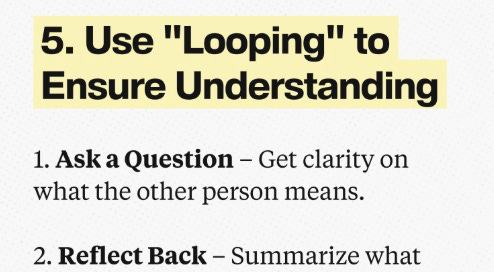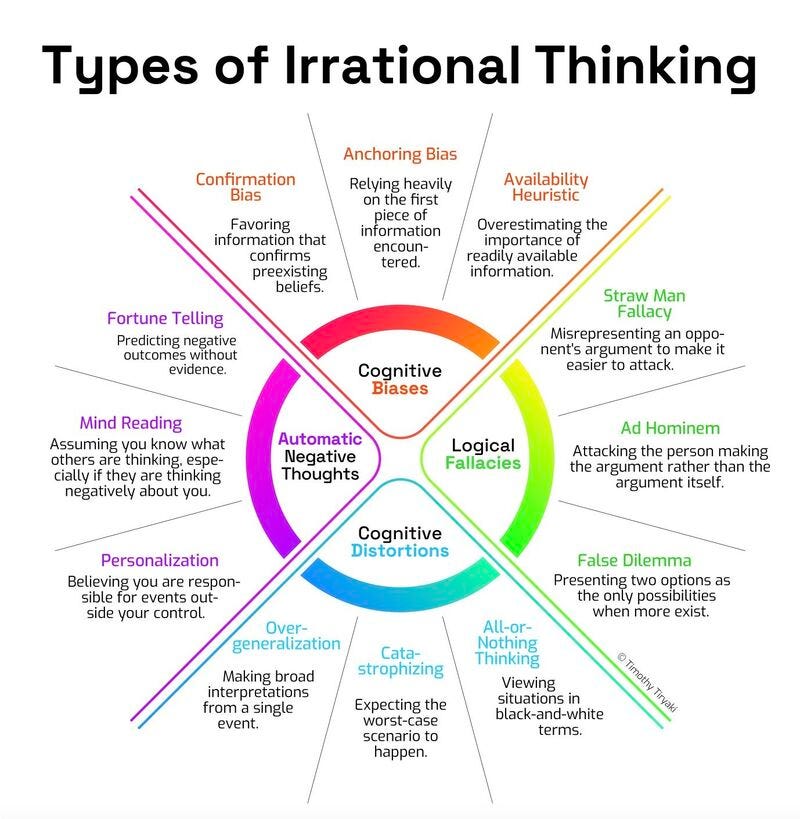This week I’m loving
Great communication is something generalist PMs are known for. However, as lifelong learners, we are always striving to improve our skills, regardless of whether they are in our innate or acquired toolkits. This week’s love goes out to Colby Kultgen for his tremendous carousel on top-shelf communication habits that will help you level up. You can check it out here.
Coles notes:
Know the type of conversation you are in (there are three types!)
Image credit: Colby Kultgen - LinkedIn
Ask more questions (10 - 20x compared to your peers).
Ask what is desired from the conversation.
Use vulnerability to build a deeper connection.
Use loops to help someone have certainty that you are interested in what they have to say.
Image credit: Colby Kultgen - LinkedIn
From the Practice
It happened. You know something is wrong with your project, program, or portfolio. You know you need to say something about it. But you can already feel the reactions of your stakeholders when you tell them the bad news and this is building anxiety, every minute you wait to have the conversation. I feel you. And I think one of the things we really don’t prepare project managers for in their career is how to have “high-stakes” conversations. But today, I’m sharing a super smart framework that might help you, not just in the tough conversations, but also in the valuable ones you need to have with stakeholders to get the job done.
In a Harvard Business Review article last week, Jeff Wetzler lays out the best framework I’ve seen for how to do this the right way: the “Curiosity Check”.
If you can cultivate genuine curiosity—especially under conditions of stress or threat—the benefits are enormous.
Specifically key benefits are:
Increased ability to process new information
Increased creativity in response to complexity
Good brain feels by activating your learning and reward signaling
Greater resilience when facing unexpected information
So how, can you tap into this, to use it optimally as you head to that dreaded conversation?
Locate where you are on the “Curiosity Curve”
Image credit: Jeff Wetzler
Set your curiosity intention. Commit to moving one or two zones away from where your starting location. Choose a target that is ambitious, but feasible. For example, if you start at Confident Dismissal, aim for Cautious Openness.
Spark the shift by asking yourself preparation questions that are curious. For example, what might the Project Sponsor be struggling with that you are unaware of? This might help you understand and manage their reaction to your news.
There’s some great stories in the article of how this was applied in real project/problem situations. If you check it out, I’d love to hear how you think you’ll use this framework going forward!
An interesting read
When people ask me about non-technical skills in project management that I think are essential, my first answer is always: get better at asking good questions.
Today’s interesting read is a great overview of why asking good questions is a secret leadership superpower. If you don’t have time to read it, here’s a good summary, but I hope you read it!
Image credit: Pia Lauritzen - published in Strategy + business
A tip
I love this quick reference from the team at Strategy Consulting to help you quickly identify the types of thinking you are seeing among your team or stakeholders so that you can define ways to address it.
Image credit: Timothy Timur Tiryaki - LinkedIn
A lesson
This week’s lesson comes to us from the PMI blog and addresses setting realistic expectations in AI projects (arguably advice that really applies to all projects).
There were two things here that I wanted to highlight as my experience is they are critical ingredients to success:
Get everyone on the same page about success for each step of the journey. Answer the questions: “what does success look like?” “what is the value here?”
Think big and start small. You can have an ambitious vision, but keep that fuzzy. Take the first step you think is needed toward that vision and then regroup and evaluate.
Ambition isn't the problem. Unmanaged ambition is.







